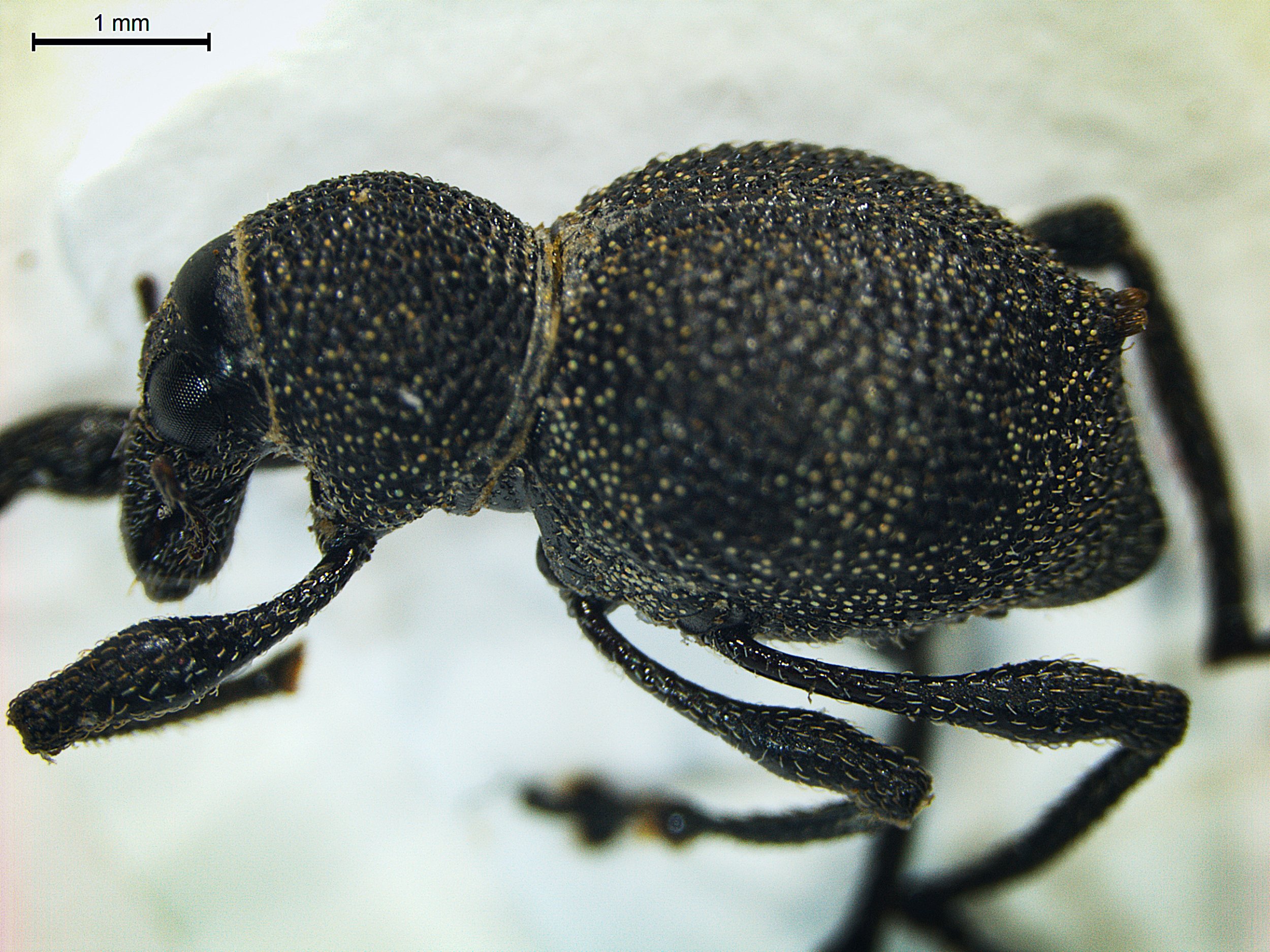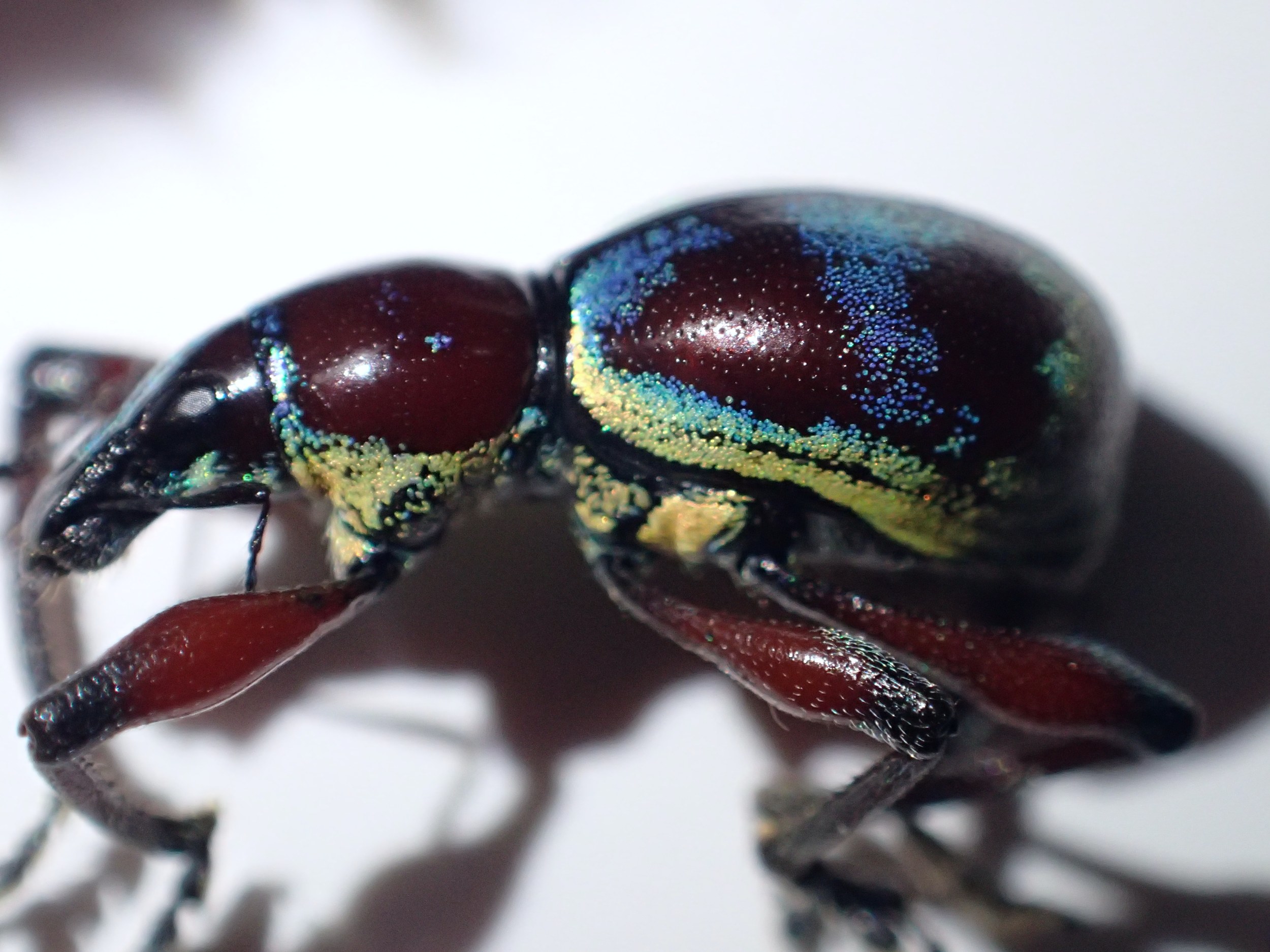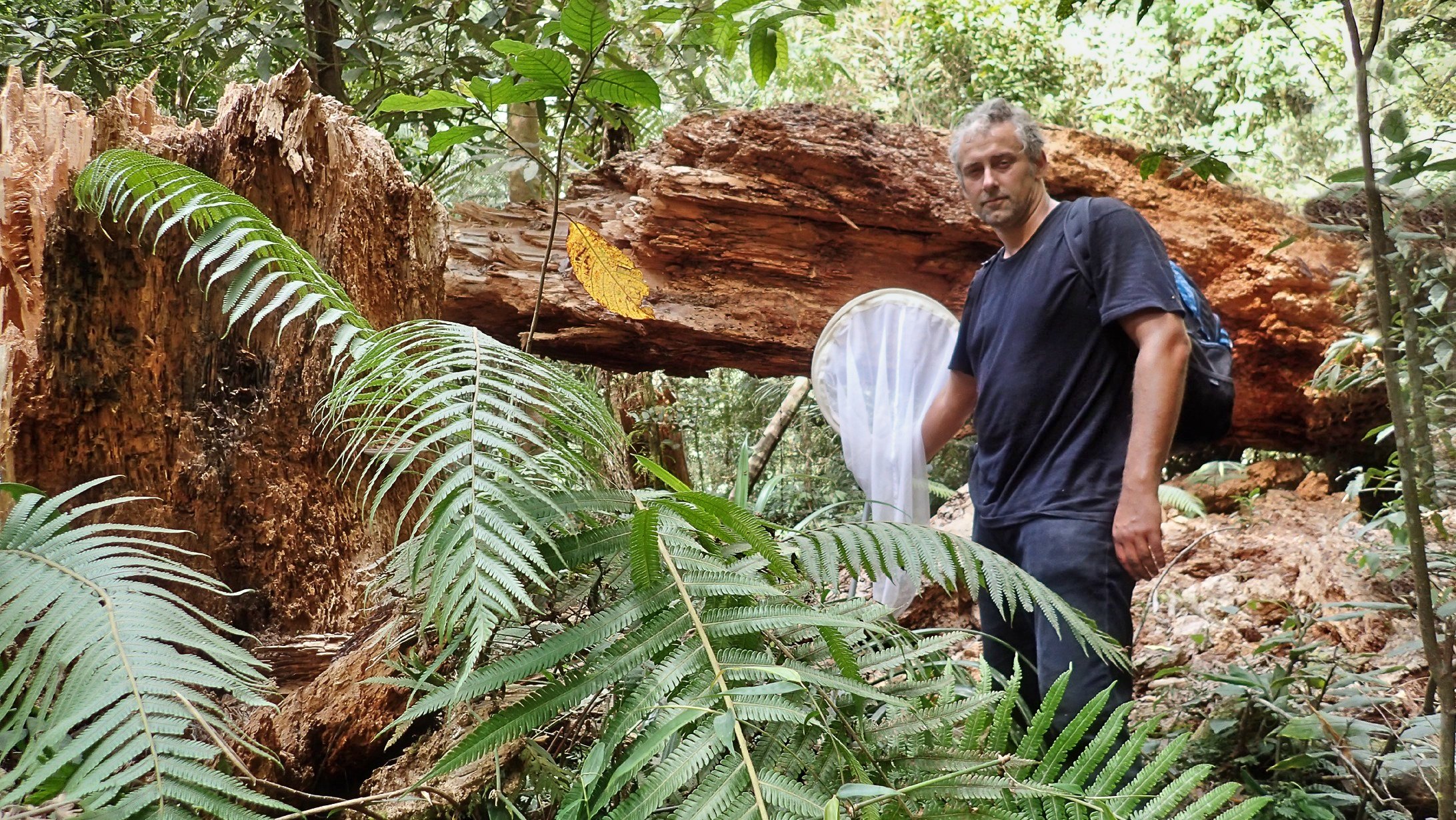A University of Alberta researcher has unearthed two species of weevils — one new and one thought to have been extinct — that have managed to survive clearcutting of the Philippines rainforest.
The discoveries are “an encouraging sign” of the potential for wildlife to recover from human-made disruption, says Tom Terzin, an Augustana Campus biology professor who made the identifications.
“Nature is amazingly resilient, if we give it a chance for recovery.”
He made the finds while sifting through beetle samples that had been plucked from bushes in Northern Negros National Park on Negros Island in 2016 and 2017. Located in the central Philippines, the tropical island’s virgin forest had been almost completely wiped out by logging, agriculture and population growth by the end of the 20th century.
As part of a larger project to find out how insect life had fared, Terzin, whose undergraduate research lab studies colour patterns and mimicry in insects — when one species imitates another — noticed a short-nosed weevil that stood out not for its pattern, but for its plainness.
The black bug, about half a centimetre long, didn’t have the metallic sheen of its relatives, but a scattering of light scales across its surface that didn’t form a pattern.
“This guy was a bit strange, some sort of rebel in refusing to mimic the species.”
Called Metapocyrtus (Trachycyrtus) augustanae, the new specimen is named for Augustana Campus, and Terzin is excited about the implication of its discovery.
“It could mean there’s a redirection of the habits of these species, evolutionarily speaking, and being only known from a single specimen, for now, indicates it’s probably a rare species.”

Discovering the new species was something Terzin had dreamed of since childhood, when he first became fascinated by the makeup of beetles.
“They behave like tiny natural robots. They have an exoskeleton and segmented bodies, and they crawl around obeying simple rules. If there’s an obstacle in their way they usually go around it, which is generally how a robot would behave.”
He’s even more enthused about rediscovering another short-nosed weevil, known as Metapocyrtus (Orthocyrtus) bifoveatus, that was last sighted on the island 100 years ago.
Known to live only in the rainforest’s lowlands, which were wiped out by deforestation, the colourful insect was thought to be extinct, but this sample was found in a much higher forested area of the island.
“Somehow this species has managed to survive in higher altitudes of over 1,000 metres, which shows a struggle for life, that they refused to become extinct from deforestation.
“In the world of insects, it’s almost like discovering a dodo bird.”

Though weevils, which are the largest family of beetles, are a natural part of the rainforest, knowing that these two types exist is important, since they could potentially become pests, particularly in the face of climate change, Terzin adds.
“They’re like asteroids that cross the Earth’s orbit. Some of them can be dangerous, but they’re even more dangerous if we don’t know about them. So it’s important to monitor their population — and that means we first need to discover them.”
Both of the specimens now hold pride of place in the Augustana Tropical Insects Research Studio entomology collection, where they can be accessed for teaching and research projects.
“They could be useful for studies about ecological recovery, particularly in forestry,” says Terzin, who named the newly discovered insect after Augustana as a thank-you for supporting his previous research trip to the Philippines in 2016, and as a nod to the Camrose-based campus’s increasing emphasis on undergraduate research.
One of only a handful of western researchers issued a permit to explore the country’s national parks, Terzin hopes to find more new insect species when he goes back in 2025. He also says the discovery of the two weevils might encourage the Philippine government to welcome more international scientists.
“Generally speaking, the country does a good job protecting its natural resources, but there’s an insufficient number of researchers to describe all the biodiversity there. Learning more about it could increase awareness to protect it.
“It’s a huge world with lots of still undescribed wonders and species.”
Terzin’s research was supported by an Augustana Faculty Research Grant, a University of Alberta Sabbatical Grant and a grant from the Geoscience Research Institute.
